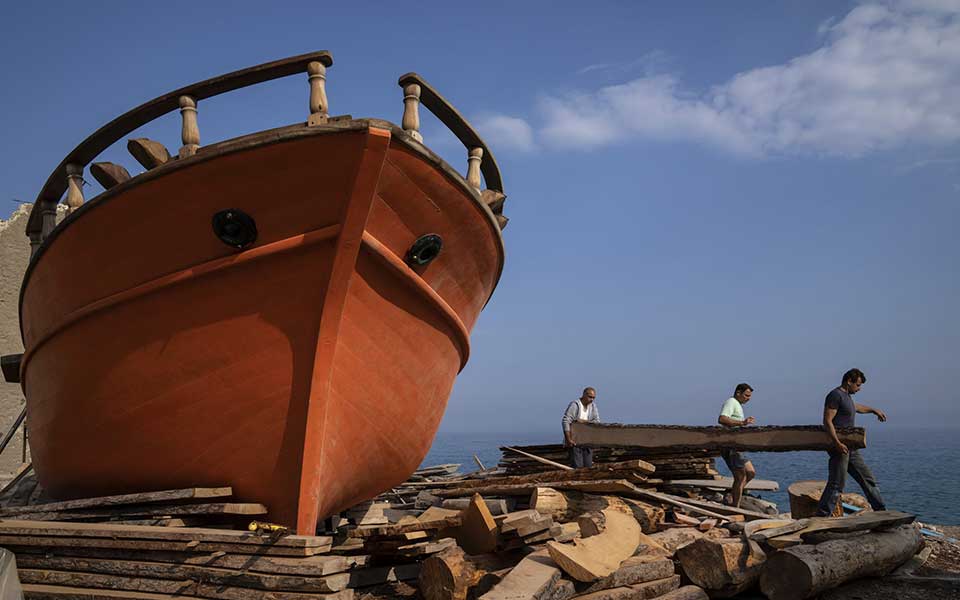Crete, the largest island in Greece, is famed not only for its breathtaking landscapes and rich history but also for its long-standing maritime traditions. Among these traditions, the art of boat-building holds a special place, representing the island’s deep connection to the sea. Traditional Cretan boat-building demonstrations offer a fascinating glimpse into a craft that has been honed over centuries, showcasing the skills, techniques, and cultural significance of this age-old practice.
The Historical Significance of Cretan Boat-Building
Crete’s strategic location in the Mediterranean Sea has made it a vital hub for maritime activity since ancient times. The Minoans, one of Europe’s earliest civilizations, were skilled seafarers and shipbuilders, establishing Crete as a major center of trade and naval power. Archaeological evidence, such as the famous frescoes of Akrotiri and shipwrecks found along the Cretan coast, attests to the island’s advanced boat-building techniques.
Throughout history, Cretan boat-builders have adapted their designs and methods to meet the changing needs of trade, fishing, and warfare. The traditional boats, or “kaikia,” were constructed to navigate the diverse and often challenging waters surrounding Crete, from the calm bays to the turbulent open sea. These vessels were not only functional but also beautifully crafted, reflecting the island’s artistic heritage.
The Craftsmanship of Traditional Boat-Building
Traditional Cretan boat-building is an intricate and labor-intensive process that requires a deep understanding of materials and techniques. The primary material used is wood, with local species such as pine, oak, and cypress being favored for their durability and workability. The process begins with selecting the right timber, which is then carefully shaped and assembled by skilled craftsmen known as “karnayiolides.”
The boat-building process involves several key stages:
1. Design and Planning: Before any construction begins, a detailed plan is drawn up, often based on traditional designs that have been passed down through generations. The design includes the boat’s dimensions, shape, and structural elements.
2. Frame Construction: The backbone of the boat is formed by the keel, which is the main structural component running along the bottom. Ribs are then attached to the keel, forming the framework of the hull. This stage requires precision to ensure the boat’s stability and seaworthiness.
3. Planking: Once the frame is complete, wooden planks are fastened to the ribs to create the hull. This process involves bending and shaping the planks to fit snugly against each other, a skill that takes years to master. The seams between the planks are sealed with natural materials such as tar or pitch to make the hull watertight.
4. Finishing: The final stage involves adding details such as the deck, mast, and rigging. The boat is then painted and decorated, often with traditional motifs and colors that reflect the cultural heritage of the region.
Demonstrations and Cultural Significance
Today, traditional Cretan boat-building demonstrations are an important means of preserving and promoting this ancient craft. These demonstrations are often held at maritime museums, cultural festivals, and heritage centers across the island. They provide an opportunity for locals and visitors alike to witness the boat-building process firsthand and to appreciate the skill and artistry involved.
During these demonstrations, master craftsmen showcase their techniques, explaining each step of the process and the historical context of their work. Audiences can see the tools and materials used, learn about the different types of traditional Cretan boats, and even participate in some of the hands-on activities.
These demonstrations are not just about showcasing craftsmanship; they also serve to highlight the cultural and historical significance of boat-building in Cretan society. Boats have always been more than just a means of transportation; they are symbols of the island’s connection to the sea, its economic livelihood, and its cultural identity. By preserving and promoting traditional boat-building, Cretans are keeping a vital part of their heritage alive for future generations.
Educational and Economic Impact
In addition to their cultural value, traditional boat-building demonstrations have significant educational and economic impacts. They provide a platform for educating younger generations about the importance of maritime heritage and the skills required for boat-building. Schools and universities often organize field trips to these demonstrations, integrating them into broader educational programs on history, craftsmanship, and marine biology.
Economically, these demonstrations contribute to the island’s tourism industry. Visitors are drawn to Crete not only for its natural beauty but also for its rich cultural experiences. Traditional boat-building demonstrations offer a unique attraction that enhances the island’s appeal, supporting local artisans and promoting sustainable tourism.
Conclusion
Traditional Cretan boat-building demonstrations offer a captivating insight into an ancient craft that remains an integral part of the island’s cultural heritage. These events celebrate the skill and artistry of Cretan boat-builders, preserving techniques that have been refined over centuries. By witnessing these demonstrations, participants gain a deeper appreciation for the island’s maritime history and the enduring connection between the Cretan people and the sea. In a world where modern technology often overshadows traditional practices, these demonstrations serve as a reminder of the beauty and importance of preserving cultural heritage.


